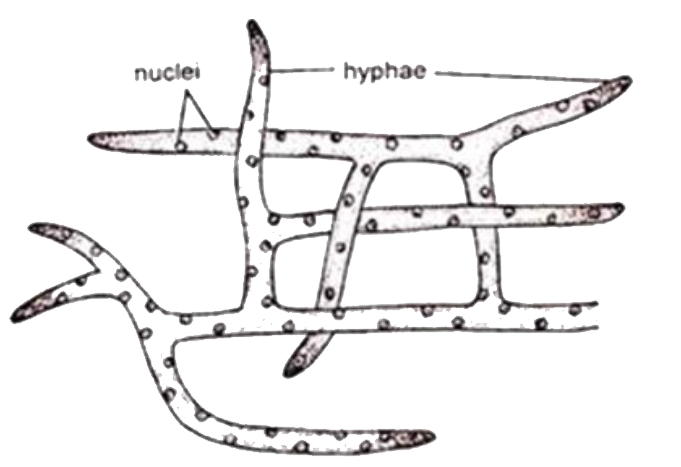Which of these organisms show budding?
Yeast
Hydra
Spongilla
All of these
The correct Answer is:D
To determine which of the organisms show budding, we will analyze each of the options provided: yeast, hydra, and spongilla.
Step 1: Understand Budding
Budding is a form of asexual reproduction where a new organism develops from an outgrowth or bud on the parent organism. This process involves the formation of a small bud that eventually detaches and grows into a new individual.
Step 2: Analyze Yeast
Yeast is a type of fungus that reproduces asexually through budding. In this process, a small bud forms on the parent yeast cell, grows, and eventually separates to become an independent yeast cell. Therefore, yeast does show budding.
Hint: Remember that yeast is a unicellular organism that can reproduce asexually through the formation of buds.
Step 3: Analyze Hydra
Hydra is a freshwater organism that also reproduces asexually by budding. A bud forms on the body of the hydra, develops mouth and tentacles, and eventually detaches from the parent to live independently. Thus, hydra also exhibits budding.
Hint: Hydra is known for its regenerative abilities and can reproduce by forming buds on its body.
Step 4: Analyze Spongilla
Spongilla, a type of freshwater sponge, can reproduce both sexually and asexually. Asexual reproduction occurs through budding, where a new sponge develops from a bud on the parent sponge. Hence, spongilla also shows budding.
Hint: Spongilla can reproduce both sexually and asexually, but budding is a key method of asexual reproduction.
Step 5: Conclusion
Since all three organisms—yeast, hydra, and spongilla—can reproduce by budding, the correct answer to the question is "all of these."
Final Answer: All of these organisms (yeast, hydra, spongilla) show budding.
Budding is a form of asexual reproduction where a new organism develops from an outgrowth or bud on the parent organism. This process involves the formation of a small bud that eventually detaches and grows into a new individual.
Yeast is a type of fungus that reproduces asexually through budding. In this process, a small bud forms on the parent yeast cell, grows, and eventually separates to become an independent yeast cell. Therefore, yeast does show budding.
Hydra is a freshwater organism that also reproduces asexually by budding. A bud forms on the body of the hydra, develops mouth and tentacles, and eventually detaches from the parent to live independently. Thus, hydra also exhibits budding.
Spongilla, a type of freshwater sponge, can reproduce both sexually and asexually. Asexual reproduction occurs through budding, where a new sponge develops from a bud on the parent sponge. Hence, spongilla also shows budding.
Since all three organisms—yeast, hydra, and spongilla—can reproduce by budding, the correct answer to the question is "all of these."
Similar Questions
Which of the organisms show mitotic divisions in both haploid and diploid cells?
View SolutionWhich of the following shows budding?
View SolutionWhich of the organism show no evolution of Oxygen during photosynthesis
View SolutionWhich of the following organisms do not show male heterogamety ?
View SolutionWhich of the following organisms will show a condition as depicted in the following diagram ?

View SolutionName the organism, which undergoes budding as reproductive process.
View SolutionWhich of the following organisms do(es). Not exhibit internal budding? (a) Yeast (b) Sycon (c)Spongilla (d) Hydra
View SolutionWhich one of the following organisms shows anisogamy?
View SolutionWhich kind of population interaction is found between organism showing pseudocopulation ?
View SolutionA bud is
View Solution
